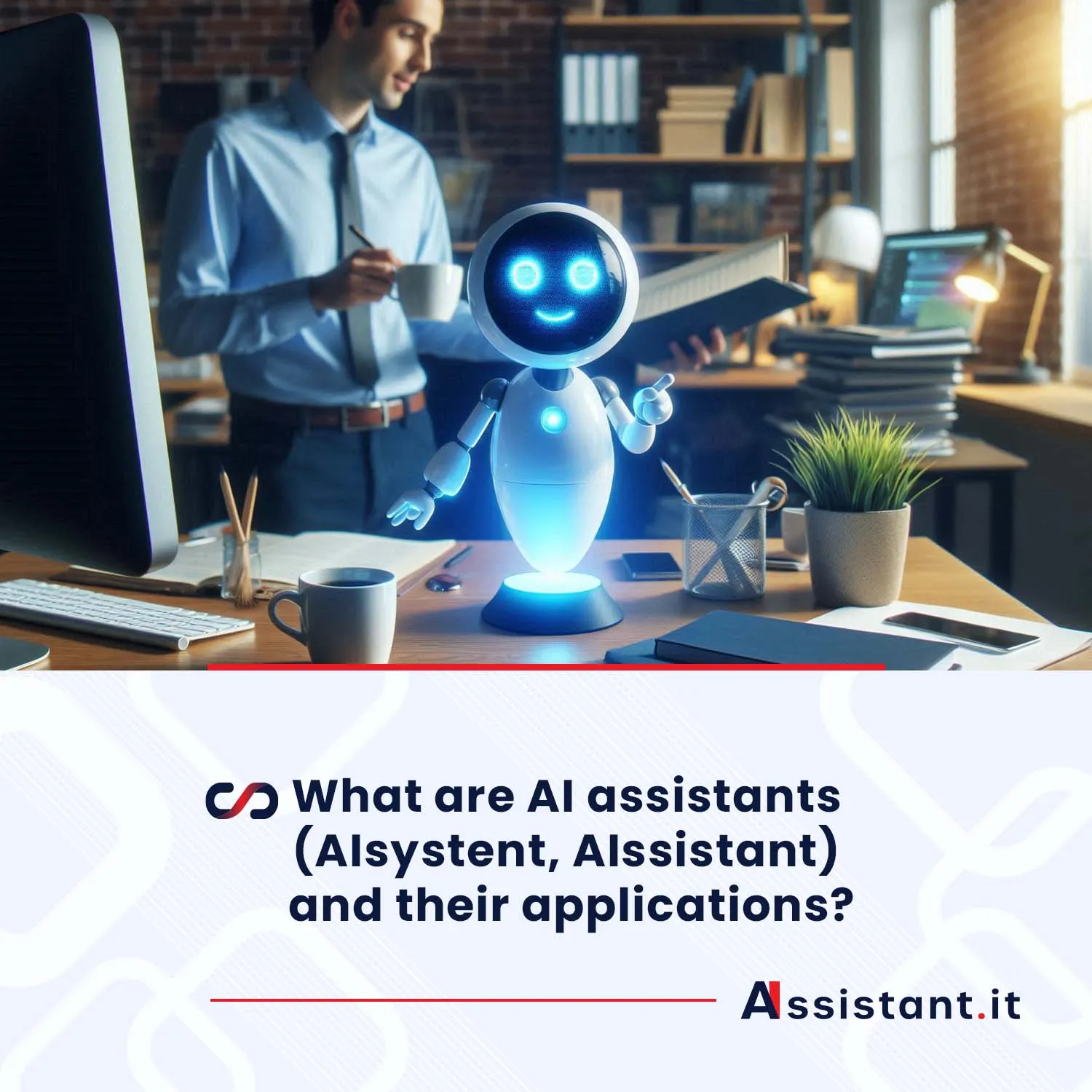AI assistants are a special type of computer program or application that uses Artificial Intelligence to interact with users in a way that is similar to humans. Their main goal is to help perform various tasks, provide information, perform simple actions, and provide users with a more intuitive communication interface. So how can we use such assistants in practice in our daily work?
AI assistants
These assistants are computer programs that use natural language processing processing (NLP) , peech recognition, machine learning, and other areas of artificial intelligence to interact with users in a way that is similar to human interaction. They can operate in a variety of environments, from mobile devices to personal computers.
Often, companies use AI assistants to automate Customer Service through chatbots on websites and messaging platforms. The assistants can answer customer questions, solve simple problems, and redirect inquiries to the appropriate departments. Sometimes, AI assistants are also used in e-learning platforms to help students and others access educational materials, take tests, and even provide advice in real time.
In addition, Law Firms among others , use AI assistants to analyze legal cases, search for specific information, and automate the creation of legal documents. AI assistants also support companies in analyzing market data, forecasting purchasing trends, and personalizing offers for customers. These assistants can also be useful in the development of natural language processing technologies , which are used in text analysis, translation, content generation, and business process automation.
Application examples – IKIDP
As an example of the practical application of such assistants, we can point to the example of IKIDP (Institute of Accounting and Tax Consulting ), where AI assistants are used in the management of a family foundation and various areas of tax consulting and accounting. A key role in the scope of courses offered by IKIDP is played by an interactive chatbot , which answers questions of IKIDP clients regarding taxes, accounting and management of family foundations.
AI assistants can quickly search databases of legal regulations and tax interpretations (based on the data entered into them) to provide up-to-date and precise information on applicable regulations. This allows for quick response to questions and ongoing monitoring of changes response to questions and ongoing monitoring of changes. AI can also analyze specific tax and legal situations presented by clients, proposing appropriate solutions or making specific calculations. In the case of sending a query to such an AI assistant, the waiting time for a response is very short, in contrast to the traditional model of cooperation with a specific advisor.
The Chatbot supports participants of IKIDP courses by answering questions related to the course content. Thanks to advanced data analysis algorithms, the chatbot can personalize interactions with clients, adapting answers and suggestions to individual needs. AI assistants within IKIDP are therefore key tools supporting the management of family foundations, tax and accounting advice. Thanks to their advanced functions, such as process automation, data analysis and providing precise answers, AI assistants can not only increase the efficiency of the work of people using such an assistant, but also improve the quality of services provided to clients. In the future, the role of AI assistants may develop even further, introducing innovative solutions and new opportunities for cooperation with clients and business partners.
Due to this, AI assistants are an indispensable part of the modern world, which offers increasingly advanced ways of interacting with technology. Their versatile applications include customer service, education, health, business, and many other areas, where they help to automate tasks, improve efficiency, and provide more personalized services and content. The development of these technologies contributes to a further increase in their role in everyday life and business, bringing benefits to both users and organizations in various sectors of the economy.
Discover how RAG (Retrieval-Augmented Generation) technology used in AIssistant.it AIssistant.it can revolutionize information processing in your company – AIssistant.it


